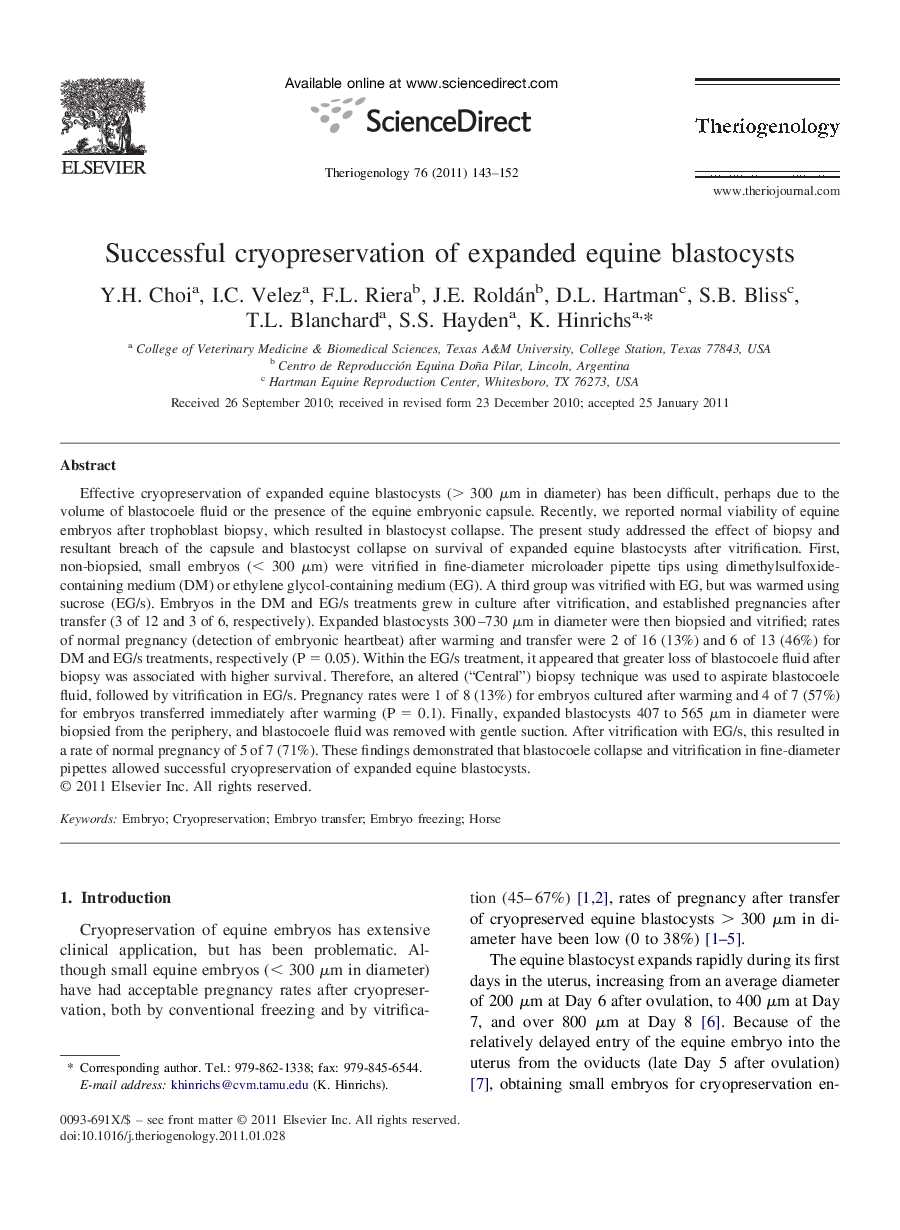| Article ID | Journal | Published Year | Pages | File Type |
|---|---|---|---|---|
| 2095558 | Theriogenology | 2011 | 10 Pages |
Effective cryopreservation of expanded equine blastocysts (> 300 μm in diameter) has been difficult, perhaps due to the volume of blastocoele fluid or the presence of the equine embryonic capsule. Recently, we reported normal viability of equine embryos after trophoblast biopsy, which resulted in blastocyst collapse. The present study addressed the effect of biopsy and resultant breach of the capsule and blastocyst collapse on survival of expanded equine blastocysts after vitrification. First, non-biopsied, small embryos (< 300 μm) were vitrified in fine-diameter microloader pipette tips using dimethylsulfoxide-containing medium (DM) or ethylene glycol-containing medium (EG). A third group was vitrified with EG, but was warmed using sucrose (EG/s). Embryos in the DM and EG/s treatments grew in culture after vitrification, and established pregnancies after transfer (3 of 12 and 3 of 6, respectively). Expanded blastocysts 300–730 μm in diameter were then biopsied and vitrified; rates of normal pregnancy (detection of embryonic heartbeat) after warming and transfer were 2 of 16 (13%) and 6 of 13 (46%) for DM and EG/s treatments, respectively (P = 0.05). Within the EG/s treatment, it appeared that greater loss of blastocoele fluid after biopsy was associated with higher survival. Therefore, an altered (“Central”) biopsy technique was used to aspirate blastocoele fluid, followed by vitrification in EG/s. Pregnancy rates were 1 of 8 (13%) for embryos cultured after warming and 4 of 7 (57%) for embryos transferred immediately after warming (P = 0.1). Finally, expanded blastocysts 407 to 565 μm in diameter were biopsied from the periphery, and blastocoele fluid was removed with gentle suction. After vitrification with EG/s, this resulted in a rate of normal pregnancy of 5 of 7 (71%). These findings demonstrated that blastocoele collapse and vitrification in fine-diameter pipettes allowed successful cryopreservation of expanded equine blastocysts.
